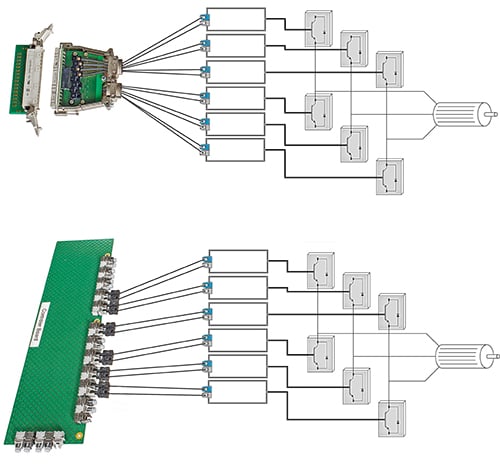Kontrola napędu w technologii kolejowej
New requirements in railway technology are leading to safer and better performing transmission systems. HARTING's Active Multi Fibre POF modules present a new solution that makes fibre optic connections easier and faster to work with.
The requirements concerning the management and technology of railway transport systems are constantly expanding. Installations should be simplified, maintenance should be accelerated, and data should be transmitted securely: one of the key goals here is to increase operational security while reducing costs. Polymer optical fibres (POF) are now the standard for the engine control used in railway transport. The key here is a safety-based concept with relatively short distances and high data rates. Consequently, it is useful to implement many connections in the application itself.
The lifespan of the components should increase as the performance increases. The goal here is to improve the performance of the interface itself while at the same time simplifying the handling. Maintenance and installation in the field should also be simplified and accelerated. The HARTING Technology Group has developed an innovative approach for connecting optical fibres: the Active Multi Fibre POF module. HARTING's Active Multi Fibre POF module enables up to 16 POF (polymer optical fibre) pairs to be connected in the size of a DIN 41 612 connector, instead of cumbersome pairwise connections.
A partial assignment of connections is also possible. An eight-way variant is pending. This can significantly simplify the handling work carried out in the field, which normally takes place under high time/cost pressures and extremely high safety standards.
Improperly connected fibre optic pairs are prevented even though the interface has a higher configuration density.


